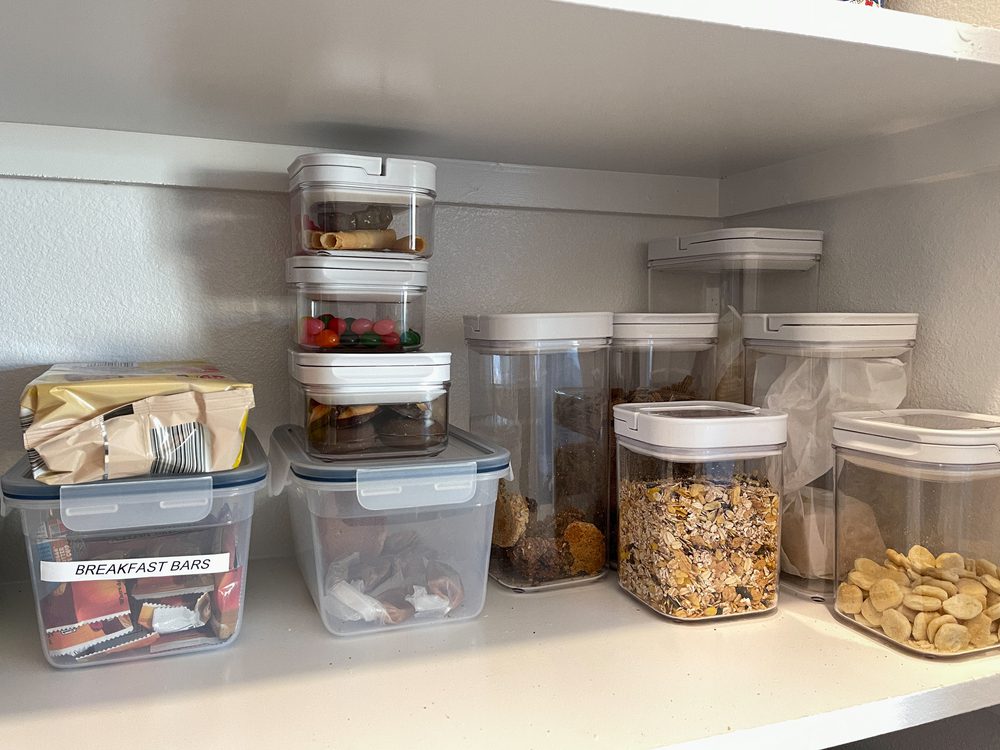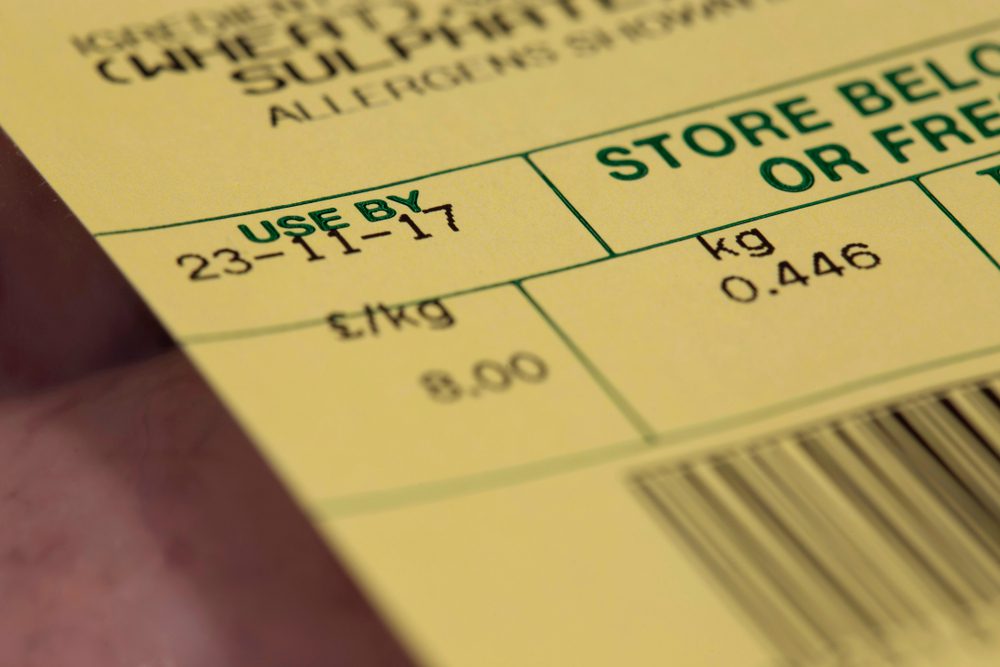Food waste is actually a bigger issue than most of us would think. As a matter of fact, approximately one-third of all food produced worldwide is discarded for different reasons. This translates to almost 1.3 billion tons of food every year. And it may not be surprising at all that the U.S. wastes more food than other industrialized countries.
Maybe you’ve disposed of your leftovers this morning, too, not thinking of how food waste affects you. Tossing edible food does not only affect your wallet but the environment as well. Because discarded foods go to landfills, where they produce methane gas, the edibles you and your family throw away every day contribute to climate change.
This harmful practice can change the way we live for the better, so it’s up to us to prevent that from happening. Let’s find out what we can do to reduce food waste.
Be smart about shopping
Unfortunately, the vast majority of people have a tendency to buy way more food than their household needs. And we totally agree that buying in bulk is more convenient and cheaper most of the time. Still, according to research, buying in bulk often results in more food waste, not necessarily saving money.
But how can we prevent food waste when it comes to grocery shopping? Experts say that it’s better to make frequent grocery store trips rather than going only once a week. Additionally, it would be best if you knew the menu for two days. As soon as you know what you need to buy for your meals, write down the items, create a list, and stick to it.

Time to store food correctly
A large amount of food waste comes from improper storage. Because most people are not aware of proper storage rules, their fresh veggies, and fruits tend to rot really fast. So, do you think you know how to store your food correctly? For example… Did you know that tomatoes, cucumbers, potatoes, onions, and garlic should never be refrigerated?
All these food items should be placed at room temperature. Another important step when it comes to proper storage is separating the food items that produce ethylene gas from the ones that don’t. So, foods like avocados, peaches, bananas, tomatoes, pears, cantaloupes, and green onions should never be placed with apples, peppers, berries, potatoes, or leafy greens.
Learn to preserve
Food preservation techniques like pickling and fermenting have been used for thousands of years, but sadly, they’re not for everybody. If you’re not really a fan of all the things the preservation process implies, you don’t have to do it; you can always buy fermented or pickled products from the grocery store.
However, if the idea of preserving foods sounds reasonable to you, fermenting and pickling are not the only methods used to make certain foods last longer. Drying, canning, curing, and freezing (the easiest one) are also good options.
Plus, these methods don’t have to be boring… Create a group of friends who don’t enjoy fermenting or pickling and use one of these food preservation techniques together on a given day. Time will fly while making fun of how “time-consuming” pickling can be.
It’s not a good idea to act as a perfectionist
Searching for the perfect-looking apples? Please don’t do it… You’re contributing to food waste. The so-called “ugly” veggies and fruits are edible, too. Just because a certain fruit doesn’t have the perfect shape, size, or color doesn’t mean it’s not good (the same applies when it comes to people).
The demand for flawless veggies and fruits leads to tons of perfectly edible food items going to waste. In fact, Whole Foods and Walmart are trying to encourage people to buy “ugly” fruits and veggies by placing them at discounts, reducing food waste this way.
Next time you go shopping, remember that perfectly imperfect is better than perfect!
Declutter your fridge
A well-stocked refrigerator doesn’t equal an overly filled fridge. In fact, a cluttered fridge is the worst thing when it comes to food waste. Keeping your fridge organized prevents food spoilage. If you’re not sure how to organize your fridge, try the FIFO method (first in, first out).
Let’s say you just bought a new carton of blueberries… As soon as you arrive home, place the new package of berries or whatever you bought behind the old ones. This will most likely help you consume the older products as well. See?! Reducing food waste doesn’t cost a dime.
Save leftovers
In general, people tend to associate leftover consumption with holidays like Thanksgiving and Christmas, but it doesn’t have to be this way. If you cook a lot, the chances are high that you regularly have leftovers. Those leftovers are probably ending up in the trash…
Save excess food from your favorite meals by storing leftovers in a glass container. Ahh, and make sure your glass container is clear, not opaque. This way, you’ll remember the foods you have left in the fridge, so you’ll probably consume them eventually.
Additionally, you’ll save time and money while preventing food waste.
Be a seed saver
Considering that more than 1.3 billion pounds of pumpkins are produced in our country every year, you would assume that the seeds coming from all those pumpkins have a bright future. Unfortunately, the reality is different.
Most of them end up in the garbage. If you think that carving pumpkins is a nice activity that brings the family closer, please, don’t throw away the seeds. Instead, find ways to save them. Besides, pumpkin seeds are super healthy and tasty. According to nutritionists, pumpkin seeds are very high in magnesium, a key mineral for your heart’s health.
Just wash and dry them. As soon as you complete these steps, sprinkle your pumpkin seeds with salt, pour some olive oil over them, and finally, toast them in the oven. You can do the same thing with butternut squash and acorn seeds too.
Use your blender
A super delicious way to minimize food waste in your household? Blending! When the peels and ends of certain products may not look as appetizing and mouthwatering as they once did, toss them in your blender.
You can enjoy all the benefits they have to offer in another form, namely smoothies. This is particularly true when it comes to kale and chard, as they tend to go bad really fast.
Most veggies and fruits make an excellent addition to smoothies. You just have to find your favorites.
But if you’re out of ideas, broccoli, bananas, carrots, beets, cucumbers, blueberries, and strawberries are safe bets.
Don’t forget about portion size
Keeping your portion sizes in check is beneficial for your health, too, not just for your wallet and the environment. Avoid buying large amounts of certain products. Try to determine how hungry you actually are. Ahh, and slow down. Fast eaters tend to overeat; therefore, they gain weight.
In fact, numerous studies point out that overeating leads to obesity, and it’s a big issue in our country. And because supersizing often translates to super waste, A recent survey shows that if someone’s plate size is reduced by only 9 percent, the food waste can actually be reduced by over 25 percent.
So, make sure your serving sizes stay within a healthy range.

Understand expiration dates
You may find this statement silly, but most people don’t understand (or don’t want to understand) expiration dates. For instance, “expires on” and “sells by” are two confusing terms used on food labels that most consumers don’t understand, at least not completely.
The real issue comes from the US government because it doesn’t regulate these terms. However, “sell by” is usually used to let the retailers know when a certain product should be sold, while “best by” is actually a suggested date used to inform consumers when they should safely consume the product.
Yet, neither of these two terms suggests that a given product is unsafe to consume. We suggest looking for products that have the word “use by” on their labels. You’ll know for sure when the product will expire.
Pack your lunch
If your refrigerator is filled with food, why on earth would you go out to lunch? Just think about how much money you spend eating out with your coworkers in a month. It’s costly, and it also contributes to food waste. So, if you want to save some dollars, bring your lunch to work.
Leftovers from last night’s meal could be the perfect lunch at the office. To make sure you’ll actually get your lunch to work with you, pack it in the afternoon for the next day. Not only will you avoid food waste, but you’ll eat healthier too.
This intelligent waste compost bin might be really useful if you are trying to reduce food waste in your household.
You should also check out: 11 Amazing Salads You Can Make in 15 Minutes













